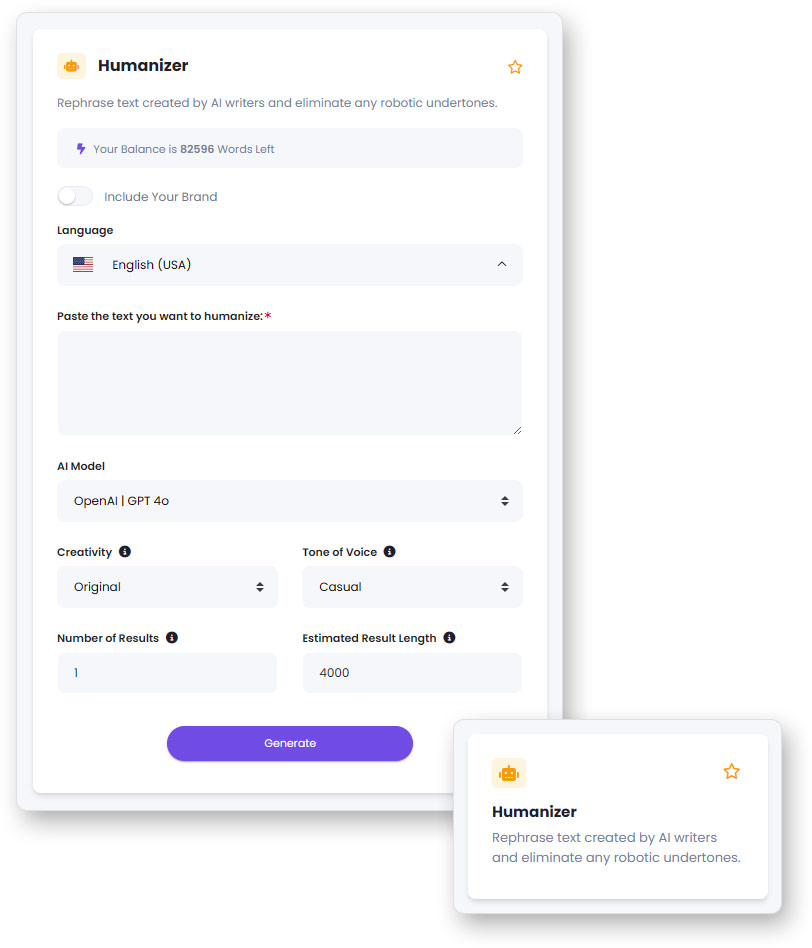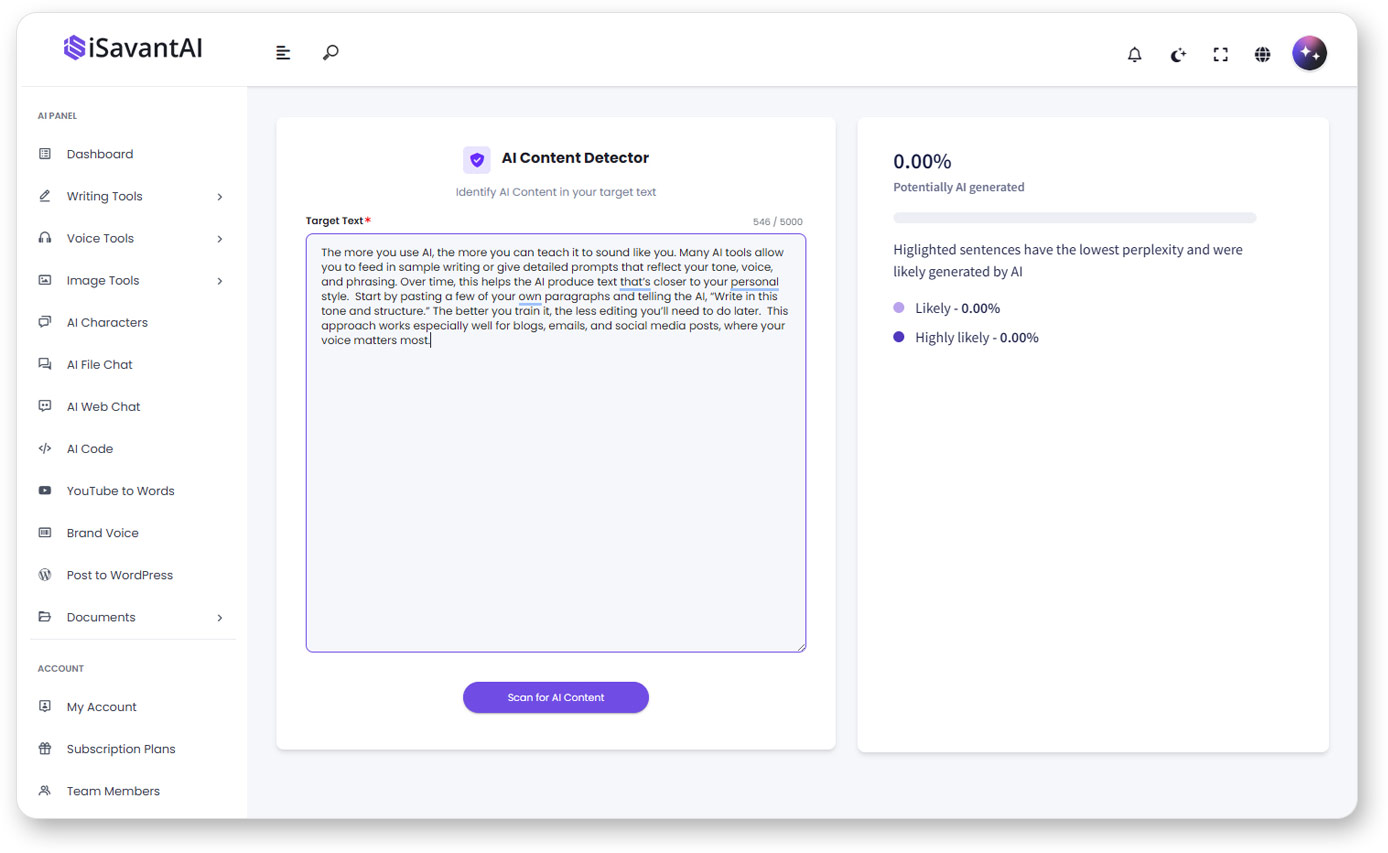Artificial intelligence tools have made it easier than ever to create content. You can type a short prompt and get a blog post, product description, or even a story in just seconds. But while these tools save time, the results often lack warmth, personality, and a natural flow. That’s where the real work begins. If you’ve ever read AI-generated text and thought, “This doesn’t feel quite right,” you’re not alone. It might have perfect grammar, but it still sounds off, too stiff, too flat, or just plain boring. That’s why it’s important to learn how to humanize AI-generated text.
By taking a few simple steps, you can turn cold, mechanical writing into content that feels real, engaging, and easy to connect with. This article will walk you through why AI writing often sounds robotic and exactly how to humanize AI text so it feels like it came from a real person.
Why AI-Generated Text Often Lacks a Human Touch
AI-generated writing usually starts with a formula. It’s trained on large amounts of data and patterns, so it tends to follow common phrases and safe sentence structures. While this can make the writing look clean, it often strips away the personality that makes human writing relatable.
One common issue is repetition. AI can repeat the same phrases or sentence types without realizing it. This creates a dull rhythm that feels unnatural. Another problem is tone. AI often avoids strong opinions or emotions, which can make the writing sound distant or bland. Even word choice can be a problem, many AI tools lean toward formal or vague language that doesn’t reflect how real people speak.
These things might seem small, but they add up. Readers can sense when something feels “off,” and that feeling can make them tune out. If you want your writing to build trust and keep people reading, it’s worth learning how to humanize AI text in a way that sounds real and connects with your audience.
Step-by-Step: How to Humanize AI Text
When you’re working with AI-generated content, it’s important to go beyond just grammar and spelling checks. To make the writing feel natural and truly connect with readers, you need to take steps that bring warmth and personality into the text. Below are seven practical ways to humanize AI-generated text and make it sound more like something a real person would write.
1. Use a Humanizer Tool
If you want a fast way to improve AI content, try using a humanizer tool. One option is the iSavantAI AI humanizer tool which is one of the 50+ writing templates. It’s designed to make AI-generated text feel more natural and human. It analyzes tone, flow, and clarity, then rewrites sections to improve how they sound to readers.
This tool is especially helpful when you need to polish a long article or want a quick fix to remove that robotic feel. While it shouldn’t replace a human editor, it’s a great step in the process.

2. Craft Smarter Prompts with Perplexity and Burstiness in Mind
Perplexity and burstiness may sound technical, but they’re actually useful for making your AI content more human. Perplexity refers to how unpredictable the language is, and burstiness refers to the variation in sentence length and structure. Human writing tends to have a good mix of both.
Example prompt with low variation:
“Write a blog post about saving money. Keep it formal and factual.”
This might produce flat, robotic text.
Better prompt with varied tone and structure:
“Write a friendly blog post about creative ways to save money, including personal tips, questions to the reader, and a casual tone.”
This gives the AI room to generate more natural and lively writing, closer to how people actually speak.
Adjusting your prompt like this helps the AI output writing with a more human rhythm.
3. Make It Easy to Read Using Flesch Scores
AI tools often write at a high reading level unless told otherwise. But the average reader prefers clear, simple writing. One way to check this is by using the Flesch Reading Ease score. A higher score means easier reading.
Aim for a score between 60 and 80, which usually matches an 8th- or 9th-grade level. If the text scores lower than 50, it may be too formal or dense. Shorter sentences and common words usually help raise the score. This makes your writing easier to follow and more enjoyable to read.
4. Swap Out Jargon for Clear, Everyday Language
AI tends to use big words or technical terms even when they’re not needed. While this might sound smart, it can make your content harder to understand. A key step in how to humanize AI text is to replace confusing words with simple ones.
For example:
- Instead of “utilize,” say “use”
- Instead of “commence,” say “start”
- Instead of “implement strategies,” say “try new ideas”
Always write like you’re talking to a real person. That means using language that’s clear, friendly, and easy to grasp.
5. Teach the AI to Write the Way You Do
The more you use AI, the more you can teach it to sound like you. Many AI tools allow you to feed in sample writing or give detailed prompts that reflect your tone, voice, and phrasing. Over time, this helps the AI produce text that’s closer to your personal style.
Start by pasting a few of your own paragraphs and telling the AI, “Write in this tone and structure.” The better you train it, the less editing you’ll need to do later.
This approach works especially well for blogs, emails, and social media posts, where your voice matters most.
6. Bring Your Writing to Life with Real Experiences
AI can give facts, but it doesn’t live through anything. That’s why adding real-life moments makes a big difference. When you bring in stories, examples, or personal experiences, it adds trust and emotion to your writing.
For example, if you’re writing about time management, don’t just list tips. Share how one method helped you save an hour each day. Readers connect more with something real than with a list of facts.
This is one of the most effective ways to humanize AI text because it brings the content to life.
7. Edit for Emotional Impact
Finally, go beyond the surface and make sure the writing makes people feel something. AI doesn’t understand emotion, so its writing can feel flat. When you revise, ask yourself: Does this make the reader feel understood? Does it inspire, motivate, or comfort them?
You can add emotional weight by using words that show empathy, excitement, or concern. Phrases like “You’re not alone,” “That moment changed everything,” or “Here’s why this matters” can help the message stick.
Taking time to revise for emotional resonance makes the difference between content that’s simply read and content that’s remembered.
8. Use an AI Content Detector to Double-Check Your Edits
Even after making changes, it can be helpful to run your writing through an AI content detector. These tools scan your text to see if it still sounds like it was written by AI. While they aren’t perfect, they can point out sections that feel too formulaic, stiff, or unnatural.
After editing, paste your text into a detector and look at the flagged parts. Use that feedback to make small changes, like shortening long sentences, adding more emotion, or tweaking awkward phrases. This final step can give you confidence that your content feels more human and less machine-made.
Using a content detector is a smart way to catch anything you might miss and make sure you’ve fully humanized your AI-generated text.

Conclusion
Learning how to humanize AI text isn’t just about making words sound better, it’s about making sure your message connects with real people. While AI tools can speed up the writing process, they often miss the personal touch that makes the content feel alive. That’s why it’s so important to take time to review, adjust, and shape the output so it sounds like something you would say.
Whether you’re improving prompts, adjusting readability, or using tools like the iSavantAI AI humanizer, each step helps humanize AI-generated text and bring out a more natural voice. Adding personal stories, using simpler language, and editing for emotion can turn flat content into something warm and engaging.
If you’re working with AI writing regularly, keep this process in mind. The more you practice, the easier it becomes to humanize AI text and create content your readers will actually enjoy and trust.


Ready to Take Your Productivity to The Next Level?
For busy creators who want results, not prompts
Others Also Read
Transforming Your Writing Workflow with AI Templates
How to Humanize AI-Generated Text
How to Use An AI Blog Writer to Create Blog Posts 10x Faster
AI Essay Writer – Your Simple Solution for Better Essays
How To Use AI To Write An Essay
Ways Small Business Owners Can Use AI to Eliminate Hours of Work
Ways to Use AI to Make Money in 2023